New plaque honours black community that helped 'forge the identity' of Leslieville
A new heritage plaque in Leslieville honours some of the neighbourhood's earliest black residents — many of whom came to Toronto to escape slavery in the southern United States.
"They courageously followed the dangerous path to freedom via the Underground Railroad and some settled here," reads the inscription.
"While a few returned south after the Civil War ... many remained, helping to forge the identity of Leslieville today," the plaque continues.
By the mid-1860s, there were around 60 to 75 black people in Leslieville, the plaque says — about 20 per cent of the area's population of around 350. Many of them had used the Underground Railroad, a web of secret routes and safe houses that helped slaves escape to the northern U.S. and Canada.
The plaque was unveiled during a ceremony Tuesday morning at the bustling intersection of Queen Street East and Logan Avenue, now home to a condo building.

Leslieville resident discovers family connection
The Leslieville Historical Society worked with the developer behind the condo complex — The Daniels Corporation — to have it displayed at 899 Queen St. E.
Marnie Brunton says her Leslieville stomping ground feels different after learning about her own history in the area. She was stunned when a local historian Joanne Doucette found a photo of a man that looked "exactly like" her.
"I've never seen anybody that looked like me in my life," said Brunton, who was adopted.
It turned out to be an ancestor, George Washington Milford, born in 1852.
Brunton says she now has a new connection to her neighbourhood, where there "aren't a lot of black people."
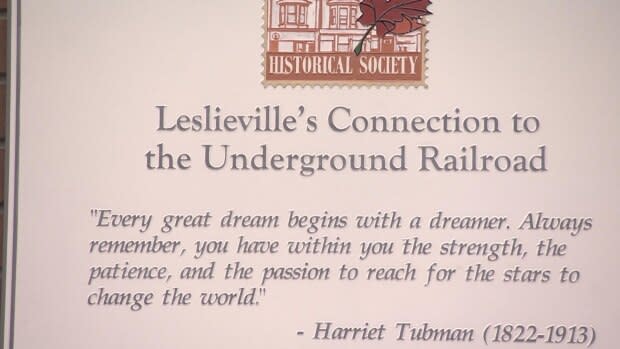
She said it's "amazing" to know that the Underground Railroad went through this area.
"It feels different in a predominantly white society, that you absolutely belong here," she said.
"We all belong here. We all built this together."
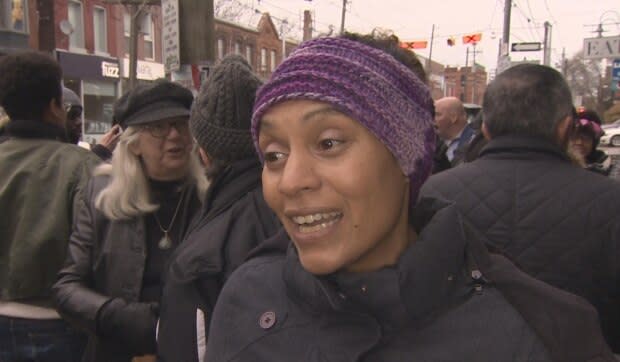
This plaque will help develop an understanding of black Canadians' contributions and the realities of anti-black racism, said Natasha Henry, president of the Ontario Black History Society.
It's "one way of acknowledging and remembering that black Canadians were indeed part of particular spaces and places," she said.
Black settlement in Leslieville traced to early 19th century
Many black families came to Toronto in the 1800s to escape slavery and oppression in the south, the plaque says.
Historians have traced black settlement in Leslieville and adjacent neighbourhoods to the earliest years of the 19th century.
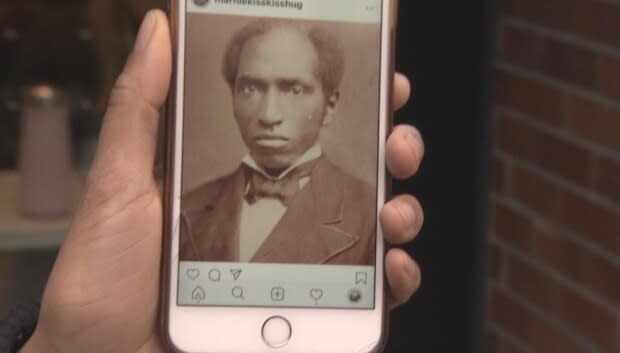
The corner of Queen Street East and Logan Avenue, where the plaque stands, was once the site of the Sewell family farm, where Samuel and Rachel Sewell raised horses.
Their son, Isaiah, was killed in a racially motivated attack near Withrow Park in the summer of 1856.
Records show that a couple named Peter and Sarah Long moved to the east side of the Don Valley shortly before their six children were baptized at nearby St. Lawrence Cathedral in 1808. The family sold produce throughout the east side of Toronto.
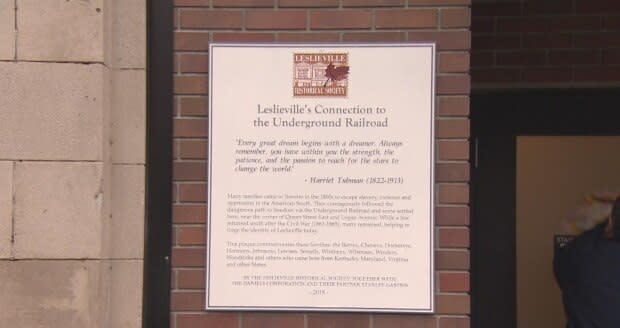
'We all want a safe, loving community'
People from all over the world now live in Toronto, "but in reality, everybody is the same," said Paulette Kelly, former vice president of the Ontairo Black History Society.
"We all want a safe, loving community where everyone is recognized."
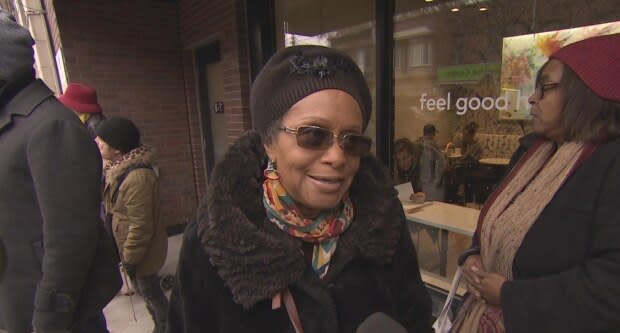
The plaque bears a quote from Harriet Tubman, an activist who escaped slavery and helped many African Americans escape to freedom.
""Every great dream begins with a dreamer. Always remember, you have within you the strength, the patience, and the passion to reach for the stars to change the world," her quote reads.


